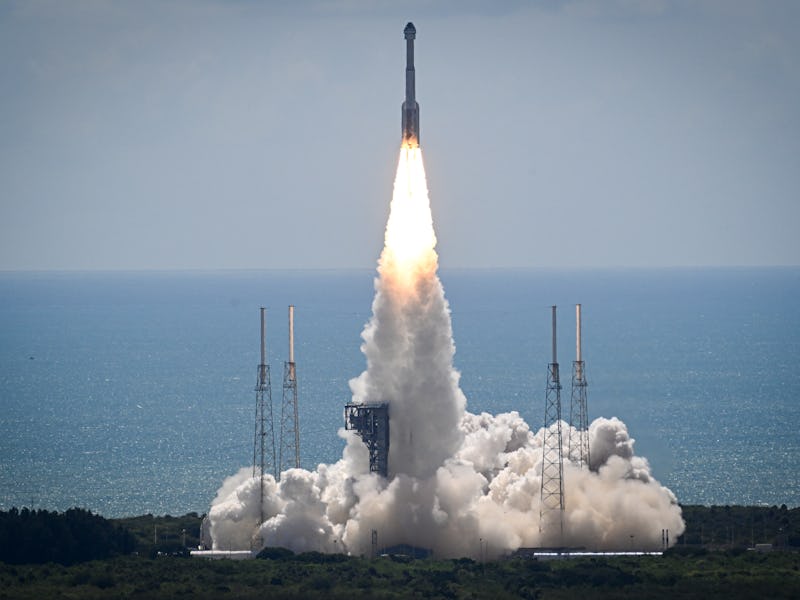Liftoff! Watch Boeing Starliner’s Historic Launch Through These 7 Photos
An Atlas-class rocket hasn’t sent humans into space since the Mercury program’s final flight 61 years ago.

NASA now has a backup plan for space travel.
When Boeing Starliner launched at 10:52 a.m. Eastern on Wednesday from Space Launch Complex 41 at Cape Canaveral Space Force Station, so began the critical first chapter of the company’s Crew Flight Test.
Astronauts Butch Wilmore and Suni Williams flew at 17,500 miles per hour northbound along the U.S. East Coast, towards Ireland, and over the Mediterranean Sea before entering orbit around Earth.
If Starliner aces the checks, docking with the International Space Station, reentry and landing in this next week, it will become the second U.S. human-rated spacecraft capable of ferrying astronauts into orbit.
Watch Wednesday’s historic launch, in pictures.
NASA astronauts Butch Wilmore and Suni Williams bid farewell to a crowd, which included their family and friends, by giving away flowers and tossing out mission patches. Astronaut Doug Wheelock (not pictured) was also in the crowd, taking video and photos for their families to remember the moment. Soon after, Wilmore and Williams boarded a van to reach the Boeing Starliner “Calypso” spacecraft for the Crew Flight Test launch.
Boeing Starliner and its two passengers launched atop a United Launch Alliance Atlas V rocket from Cape Canaveral, Florida. Not since the Mercury program’s final flight 61 years ago has an Atlas-class rocket sent humans into space, according to NASA.
A view of the Starliner launch from another angle. Starliner launched on a flat trajectory up northward, wrapping around the Atlantic Ocean into Europe, to ensure astronaut safety.
About 45 seconds after launch, the spacecraft reached the speed of sound (Mach 1).
“Suni and I are honored to share this dream of spaceflight with each and every one of you,” Wilmore said from inside the Starliner, five minutes before launch.
“Let’s go Calypso! Take us to space, and back!” Williams said.
Williams and Wilmore will dock with the forward port of the ISS Harmony module at 12:15 a.m. Eastern time, with a hatch opening around 2:00 p.m. Eastern, according to NASA.
The next step is certification. Williams and Wilmore will conduct a series of manual tests, and evaluate the performance of Starliner all the way through landing in the U.S. southwest in about one week.
Once Starliner is certified, NASA will have dissimilar redundancy in space, two different options to launch and return astronauts to and from humanity’s farthest human outpost.